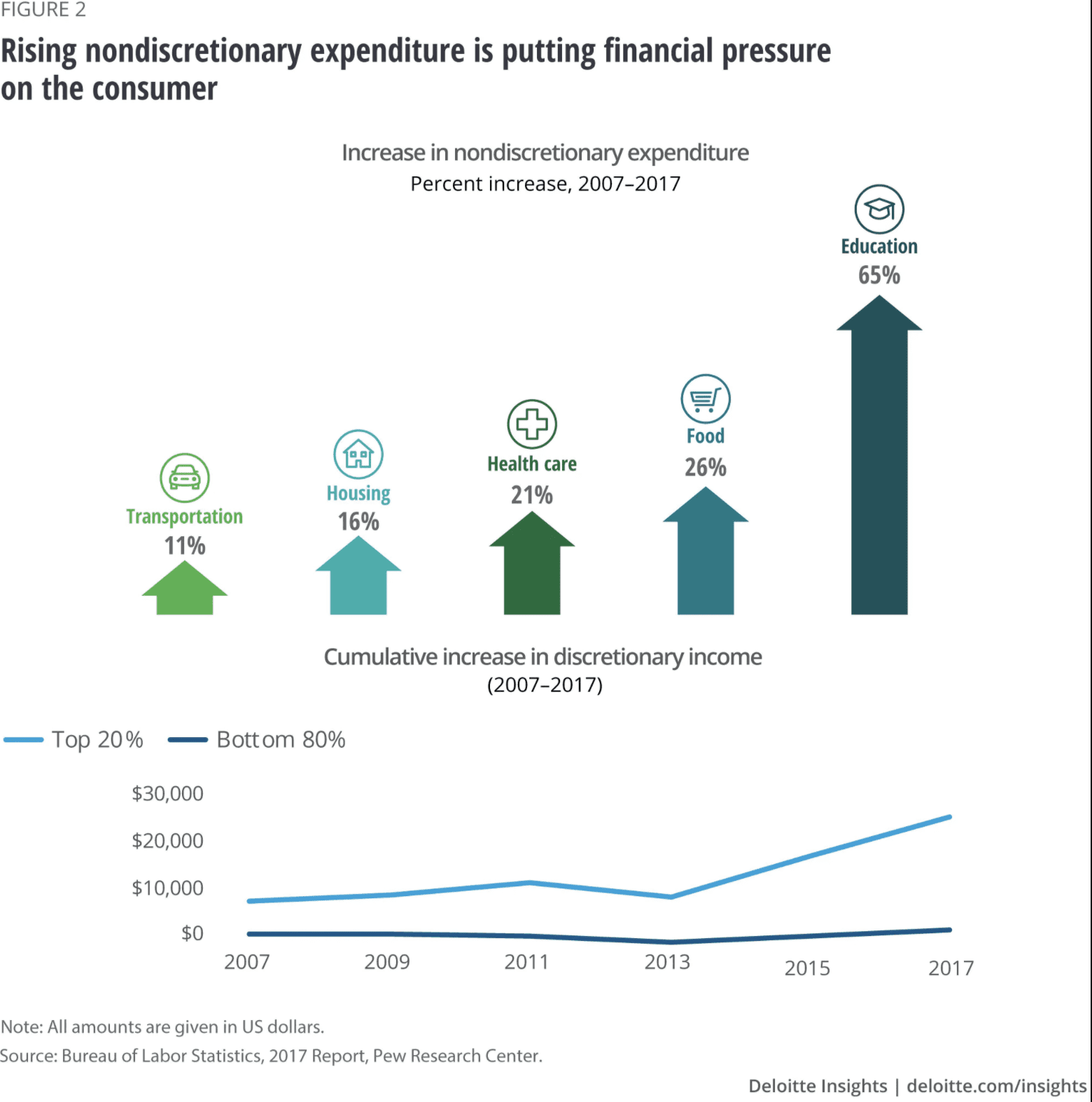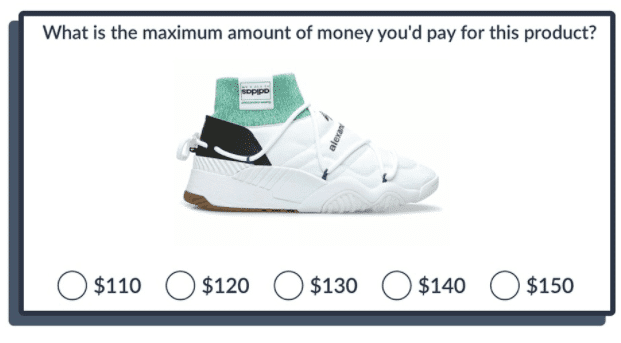87% of shoppers say knowing they got a good deal is important when choosing a brand or store. It’s really crucial that you put some thought into your pricing decisions because pricing is a powerful tool when you learn how to use it.
And it’s not just selling more or growing fast—data-driven pricing decisions can help you grow your business profitably, build a strong brand image, and long-lasting relationships with your customers.
Reading this post, you’ll learn:
- What to consider when making pricing decisions
- How to find out what people are willing to pay for your subscription service
- How to use pricing intelligence to your advantage
- How to expand your customer base using customer data
- How to make use of predictive analytics in your pricing decisions
Let’s dive in!
Factors to Consider When Making Pricing Decisions
Online prices are transparent. That means two things.
Shoppers Compare Prices Easily
Shopping in the digital age is different from conventional methods. It is very easy for customers to compare products faster and get good value for their money. There are several price and feature comparison sites that garner high traffic in almost every country.
Consumers are changing, but not the way you think, says a Deloitte study. While the new consumer identifies with brands with shared values, price is still the most important factor in the decision-making.

So it’s vital that you take competitor prices into account when pricing your subscription service. It’s all about positioning. Make sure you’re charging fairly based on how you differ from the competition.
Find Out What People are Willing to Pay for your Subscription Service
Not everyone has the same spending habits or the same spending power. Back when we had small businesses and mom-and-pop stores, retailers knew their customers in person and had an idea of their preferences and buying behavior.
In the digital age, however, what you know about your customers comes from their data. Those who’re willing to share data with you are a treasure. When you’re setting prices for newly launched subscription products/services—or when you’re not sure about product pricing—ask responsive customers about their willingness to pay.
Survey Existing Customers
Select a group of customers using the random selection research method and send them a survey asking several questions based on what you want to know.
For instance, if you’re launching a new feature, ask that group how much money they’d give up for that.
Also, ask how they value the most about your product and what’d make them want to pay a higher price.
Or, if you’re selling subscription boxes, you can ask them what’d they want to add to the box and how many extra dollars would they pay for that.

Although those answers will not reflect their buying behavior with 100% accuracy, you’ll still have an idea of what they’re willing to pay.
Offer a Variety of Options Tailored to your Customers’ Expectations
Based on your findings, you’ll have segments.
Let’s say 70% of your customers are willing to pay something between $50 and $78 for your service. Now, you have several options.
One is definitely going after the mass market share. In that case, the majority of your offers should fall between those price points.
Another is targeting a smaller group of high spenders, where you have to offer a unique selling proposition and have a solid branding that justifies the price difference.
You can also build your marketing strategy around low price points and standard quality service.
And the best way to decide which way to go is to look at data. Find out which customer segments make up for the majority of your total revenue—considering their estimated lifetime value.
Experiment with different pricing models and test if they work for your audiences, such as penetration pricing, cost-plus pricing, value-based pricing or pay as you go pricing. Deciding on a pricing model depends on your pricing objective and on your cost structure, such as variable costs, production costs, or total fixed costs. At the end of the day, the right pricing model will help you in revenue maximization.
Send Personalized Discount Codes
Now, if you’ve conducted a real-life willingness to pay analysis, you’d realize that some people are very far away from being your prospect. Not everyone’s expectations fall in line with your subscription offer, and you’re better off excluding them from your target audience.
But some of those price-sensitive customers are worth your effort. If their expectations can be met with discounts that you can afford—ones that don’t deeply cut into your profits—there’s no reason why you shouldn’t target those potential buyers.

Send personalized discount codes to your recurrent website visitors who haven’t subscribed yet. They’ll be more likely to give you a chance, and you won’t have to offer everyone a discount.
Meaning, you’ll get more customers without hurting your profit margins and profitability.
Lean on Pricing Intelligence
Gathering pricing intelligence gives you a heads up when something of concern happens.
Monitor your Competitors
Track your competitors’ prices and stock availability information. Even if your businesses has different pricing schemes, knowing how they price their products is crucial.
Because people have reference prices. We’ve got these price points at the back of our minds, and they give us an idea about what’s a fair price of a product/service.
For instance, you know that a noodle plate shouldn’t be sold for $100 on a regular street. You know that because you’ve seen or eaten noodles sold down the street over and over, and none of them cost $100.
Monitor your competitors to make sure there’s no unjustifiable price difference, and your selling prices are reasonable.
Offer Competitive Deals
2020 was a tough year for many households. People’s finances were negatively affected by prolonged uncertainty, and their consumption behavior changed forever.
That holds for some of your customers and knowing they get a good deal is more important than ever.
Based on the pricing intelligence you gathered, set competitive prices. Not all your products/services should be priced below your competitors, but make sure your offers are enticing enough for these new price-sensitive customers.
For e-commerce subscription businesses, seeing competitors’ prices also gives one leverage when dealing with suppliers. If you realize a competitor continuously has the best price, they’re likely getting a better deal from the supplier. Use this information when negotiating with your suppliers.
Expand your Customer Base using Existing Customer Data
Growing your customer base is extremely important yet equally hard. If you don’t want your efforts to go in vain, you can target people with shared interests and needs with your existing customers.
Even if you don’t have enough data points of your prospects, existing customers’ data is out there waiting for you.
Use WTP Data to Understand your Prospects
Although basic Willingness to Pay surveys don’t yield highly accurate results, they give you an idea of your customer base.
Since you want to attract similar people, you can understand the perceived value of your service and how much money they’re willing to spend on it by looking at your survey data.
Suppose you’re planning to launch a new product and asked the following questions in your survey:
- Which specific product line we offer makes you return to our store?
- Please pick the features/similar products that’d motivate you to pay more for this subscription.
- Which of the following would encourage you to upgrade your subscription?
Those answers will be gold.
First, they’ll help you save money. You won’t invest in something that doesn’t seem essential to your customers’ happiness.
Second, you’ll launch a well-targeted campaign that’ll represent your prospects’ pain points, interests, and needs—including their willingness to pay.
Moreover, you’ll find out what brings value to your customers the most and reshape your strategy on the way.
Send Price-drop Emails to Email Subscribers
If your prospects left email information yet didn’t subscribe, you can hold on even to that single touchpoint.
When there’s a planned discount or a price drop on your website, those leads should be the first group to know. Send them automated price-drop emails and see if anyone’s interested in your deal. If you’re using repricing software, integrate it with your email software to automate the process.
If this works, try out new ways to collect emails. A free course, research, reports, etc., are among the most popular content types that generate leads.
Make use of Predictive Analytics Before Implementing a Price Increase Plan
So far, we’ve focused mostly on expanding your customer base and increasing your visibility. But you’ve got another major, everlasting concern. How do you keep your customers?
Well, sometimes, it’s what you don’t, not what you do.
A poorly executed price increase plan, for instance, can push weak-tie customers away in minutes and forever. But you can’t avoid it forever, right?
That’s why you should test your price increase plan.
Test your Price Increase Plan First
Suppose you’ve introduced a feature that’ll be included in each subscription package. Naturally, you want to restructure your pricing plan.
But before, here’s how you segment your customers based on their price elasticity.
Look at How they Reacted to the Previous Price Changes
This will give you an idea about their price sensitivity.
What was their reaction to the latest price decrease, for instance? Did they give you any signal that they’re annoyed? It can be a question coming to your customer success team, asking for the reason behind the price increase.
Or, for customers that canceled their subscription and returned later, did their return coincide with a price drop?
And what about discounts? Who subscribed to your business using a discount? Was that discount big? Or was a small discount enough to entice them?
These questions—and others you can come up with—will help you segment your customers based on their price sensitivity.
Let’s say you’ve assigned your customers a point on a scale from 1-100, based on their answers to those questions above.
Divide them based on their scores into, let’s say, four groups—or more if you like. Now, randomly select a smaller group from each group, and talk to them about your price increase plan.
Their answers will give you a good idea of how those four segments will react to your price increase plan. You can also communicate your plan to them quite transparently, telling them you’re only considering the increase yet.
Of course, this test might not yield highly accurate results; it’s much better than no testing at all.
You can also build a predictive algorithm on your own, or use a demand forecasting tool if you have the budget and time and need more accurate forecasts.
Offer Discounts to Price-sensitive Customers or Exclude them for a While
Let’s say the most price-sensitive segment (the 75-100 points range) reacted very badly to your price increase plan. What’s next, are you canceling the plan altogether?
But your costs are increasing, and this price increase is incremental to your profitability.
Instead of abolishing the plan, exclude price-conscious customers from it, at least for a while. Offer them the old price and tell them that they’re given a special discount. Perhaps knowing they got a better deal from the rest will convince them to stay with you.
Also, they’ll be happy to see you making an effort just for them, which makes people feel like they’re cared for.
Doing this doesn’t guarantee you’ll keep them, but it’s definitely worth trying.
Head here to know more about pricing experiments for subscription businesses.
Parting Words
Data-driven pricing decisions can open your business up to opportunities you can’t even imagine. But even if the data sits in front of you, you might not be looking in the right place for insights.
We’ve talked about several data-driven pricing strategies for your subscription business, and now you have a better understanding of the power data-driven pricing grants you.
Test those strategies to see if they work for you, and tell us about the results!





